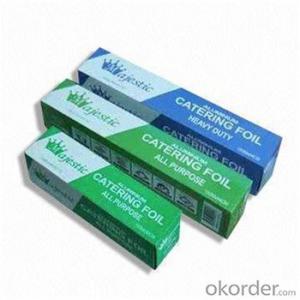Aluminum foil, a staple in most households, is a versatile material that has found its way into various aspects of our daily lives. From cooking to cleaning, this thin yet strong sheet of aluminum has proven to be indispensable. In this article, we will explore the many uses of aluminum foil, focusing on its role in food preservation, and share some personal anecdotes and tips along the way.
The Wonders of Aluminum Foil
Aluminum foil is made from aluminum, a metal known for its malleability and resistance to corrosion. It is lightweight, easy to use, and can be molded into various shapes. One of the most significant benefits of aluminum foil is its ability to preserve food. It acts as a barrier, protecting food from external contaminants and extending its shelf life.
A Walk Down Memory Lane
I remember the first time I used aluminum foil in the kitchen. It was during a family gathering, and my mother was busy preparing a feast. She wrapped the leftover chicken in foil to keep it fresh for the next day. I was amazed at how simple it was to use and how effective it was in preserving the food’s flavor and freshness.
The Science Behind Food Preservation
The process of food preservation using aluminum foil involves creating a barrier between the food and the environment. Aluminum foil is impermeable to air, moisture, and bacteria, which helps to prevent spoilage and maintain the quality of the food. It also reflects heat, which can be beneficial when cooking or reheating food, ensuring even cooking and preventing overcooking.
Personal Touch: My Experience with Aluminum Foil
I have had many experiences with aluminum foil, but one that stands out is when I used it to make a homemade pie. I lined the pie dish with foil to prevent the crust from sticking and to make cleanup easier. The result was a perfectly baked pie with a crisp crust and no mess to clean up afterward.
Beyond the Kitchen: Other Uses of Aluminum Foil
While food preservation is one of the primary uses of aluminum foil, it has many other applications. It can be used for cleaning, as a makeshift scrubber, or even for crafting and DIY projects. I once used aluminum foil to create a shiny, reflective surface for a school project, and it worked like a charm.
The Environmental Impact of Aluminum Foil
It’s essential to consider the environmental impact of using aluminum foil. Although it is a recyclable material, excessive use can contribute to waste. To minimize this, I try to reuse aluminum foil whenever possible, such as using it to cover bowls or as a food wrapper for multiple meals.
Tips and Tricks for Using Aluminum Foil
Here are some tips and tricks I’ve learned over the years for using aluminum foil effectively:
– Use the dull side of the foil for better food contact and heat distribution.
– Double up the layers for better insulation when cooking or reheating food.
– Crumple and reuse aluminum foil to extend its life and reduce waste.
– Store leftover foil in a cool, dry place to maintain its quality.
The Future of Aluminum Foil in Food Preservation
As we move towards a more sustainable future, the role of aluminum foil in food preservation may evolve. New technologies and materials may emerge, but for now, aluminum foil remains a reliable and practical solution for keeping our food fresh and safe.
Conclusion
Aluminum foil is more than just a kitchen essential; it’s a multi-purpose tool that has found its way into our hearts and homes. Its ability to preserve food, coupled with its versatility and ease of use, makes it a staple in food preservation and beyond. Whether you’re wrapping leftovers or using it for a creative project, aluminum foil is a material that will continue to serve us well for years to come.

